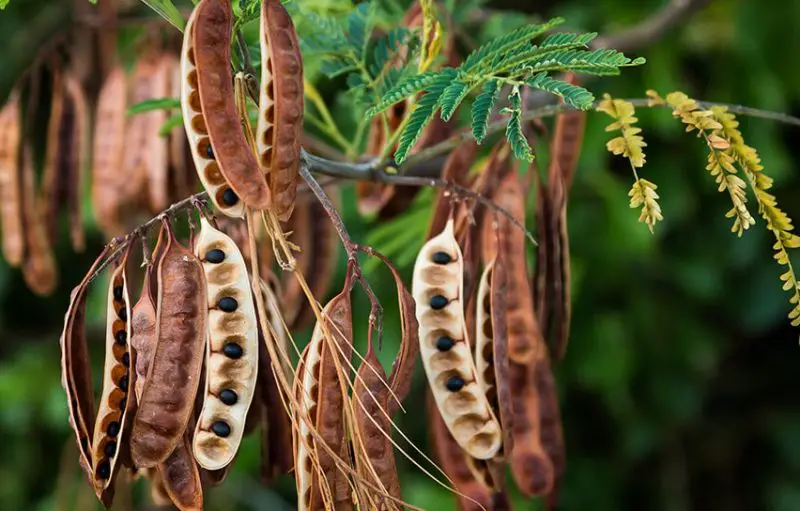When you think of nature’s wild and untamed beauty, the image of a sprawling, majestic acacia tree may not come to mind immediately. However, this remarkable tree, with its long branches and iconic umbrella-like canopy, stands as a symbol of resilience and endurance in some of the harshest environments.
In this guide, we will explore everything you need to know about acacia tree care, from its distinctive characteristics to ultimate tips for growing and maintaining these trees in your garden.
Description of the Acacia Tree
The acacia tree is like nature’s sentinel, standing tall and proud in the vast landscapes it inhabits. It is easily recognizable by its thin, sometimes twisted trunk and branches that stretch high into the sky. The tree’s most unique feature is its dense, umbrella-shaped canopy that provides shelter and shade for countless animals and plants in its natural habitat.
The acacia tree is well-adapted to arid and semi-arid environments, with leaves that are small and feathery, designed to conserve water. Depending on the species, the tree produces clusters of fragrant flowers, which can be white, yellow, or red. It thrives in USDA growing zones 8 to 11, making it suitable for regions with warm climates and minimal frost.
Characteristics of the Acacia Tree

The acacia tree stands out for a number of reasons, one of the most notable being its impressive ability to withstand tough environmental conditions. Its leaves are finely divided, often appearing feathery, which helps reduce water loss through evaporation. In particularly arid regions, the tree has evolved with spines or thorns to deter herbivores from grazing on it.
The acacia tree is known for the production of gum arabic, a substance that has significant commercial value and is used in industries ranging from food production to cosmetics. Some species also produce high-quality hardwood, prized for its durability and resistance to decay, making it suitable for construction and furniture.
Types of Acacia Trees
With over 1,000 species globally, the acacia genus offers a stunning variety of trees and shrubs, most of which belong to the pea family, Fabaceae. While the taxonomy of acacias has undergone several changes, two main groups now dominate: Vachellia and Senegalia. Each species boasts its own distinct characteristics, but all share a similar beauty and resilience.
Some notable species include:
- Vachellia tortilis (Umbrella Thorn Acacia): Native to the African savannas, this species has a flat-topped canopy and is well-adapted to harsh, dry conditions.
- Acacia dealbata (Silver Wattle): Found in Australia, this species is known for its striking silver foliage and bright yellow flowers.
- Senegalia senegal: A key source of gum arabic, it grows predominantly in Africa and is cultivated for its economic importance.
- Acacia koa: Native to Hawaii, this tree is highly valued for its beautiful hardwood used in crafting furniture and musical instruments.
Native Regions and Habitat
The acacia tree can be found in various parts of the world, thriving in regions with hot, dry climates. Its native areas include Africa, Australia, the Americas, and parts of Asia. In Africa, the acacia is a dominant feature in the savanna and grasslands, where it plays a critical role in supporting the local ecosystem. In Australia, the acacia (commonly known as wattle) holds special cultural significance, and National Wattle Day is celebrated annually on September 1st.
These trees are particularly well-suited for regions with low rainfall and poor soil, as they have evolved to make the most of limited resources. This makes them a fantastic choice for gardeners looking to cultivate drought-tolerant plants.
Uses and Cultural Significance
The acacia tree is not just a beautiful part of the landscape; it is also highly practical and revered for its many uses. Acacia wood is known for its strength and durability, making it ideal for building and furniture-making. Its dense, sturdy wood is resistant to rot, which makes it especially valuable in areas prone to moisture.
In many indigenous cultures, acacia holds spiritual and cultural significance. It is often seen as a symbol of endurance, strength, and protection. Some ancient civilizations, such as the Egyptians, used acacia wood to build coffins and boats, believing the tree had divine protective powers.
Additionally, the sap of certain species is harvested for gum arabic, a resin used in everything from food additives to cosmetics and adhesives. This versatile gum has been a valuable commodity for centuries, and its use continues in many modern industries today.
Ultimate Tips for Growing Acacia Trees
If you’re looking to add the majestic acacia tree to your garden, follow these ultimate tips to ensure its successful growth:
Choose the Right Species
Selecting the appropriate species is crucial, as different acacia trees have specific environmental requirements. For instance, Vachellia tortilis is ideal for hot, dry regions, while Acacia dealbata thrives in areas with milder climates. Consider the tree’s hardiness zone and natural habitat before planting.
Location and Sunlight
The acacia tree thrives in full sun. Ensure the tree is planted in an open area where it will receive direct sunlight for most of the day. A sunny location not only promotes healthy growth but also encourages the tree to develop its signature canopy.
Soil Conditions
Acacia trees prefer well-drained soil, particularly sandy or loamy varieties. They can tolerate poor soil, but ensuring proper drainage is essential to prevent root rot. Soil pH should be slightly acidic to slightly alkaline, within the range of 6.0 to 7.5.
Watering
While the acacia tree is drought-tolerant once established, young trees will require regular watering to encourage deep root development. Water the tree deeply, but allow the soil to dry out between waterings to avoid waterlogged conditions.
Spacing and Planting
When planting acacia trees, it’s important to consider their mature size. Depending on the species, they can grow to heights of 3 feet for dwarf varieties or up to 98 feet for larger species. Plant the trees with sufficient spacing—around 15 to 30 feet apart—to allow them room to spread their branches and canopy.
Pruning
Regular pruning is necessary to maintain the tree’s shape and promote healthy growth. Remove dead or damaged branches, and thin out crowded areas to improve air circulation. Acacia trees tend to grow rapidly, so annual pruning will help manage their size and structure.
Pests and Diseases
While acacia trees are generally resilient, they can be susceptible to certain pests and diseases. Keep an eye out for common issues such as scale insects, aphids, or fungal infections. Regular inspection and prompt treatment with organic pesticides or neem oil can help keep these problems in check.
Final Thoughts
The acacia tree is a testament to nature’s resilience and beauty. From its unique appearance to its practical uses and cultural significance, this tree has captured the admiration of people around the world. Whether you’re planting an acacia tree for its striking canopy, its drought resistance, or its spiritual symbolism, following these care tips will help ensure your tree thrives for years to come.
By incorporating the right care techniques—selecting the proper species, providing adequate sunlight, ensuring well-drained soil, and maintaining a regular watering schedule—you can cultivate a healthy and vibrant acacia tree that will bring beauty and character to your garden or landscape.






